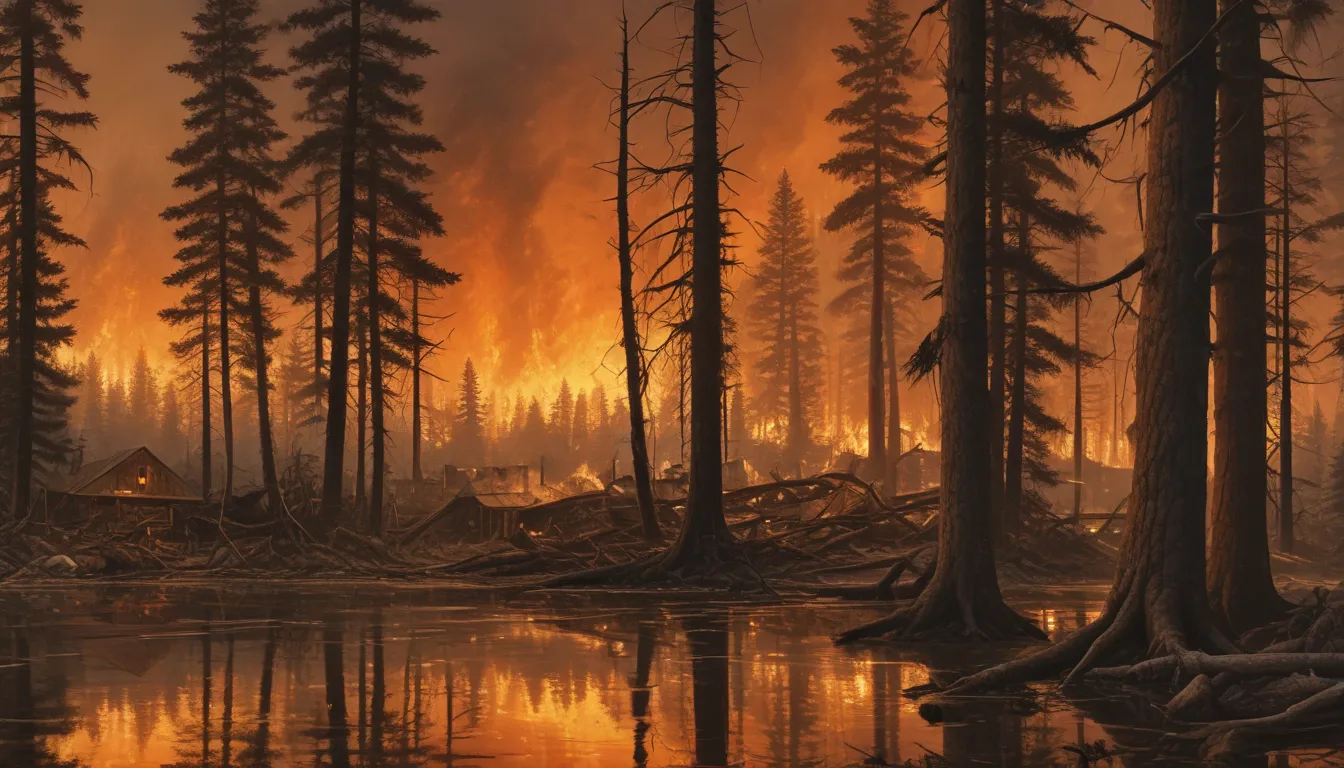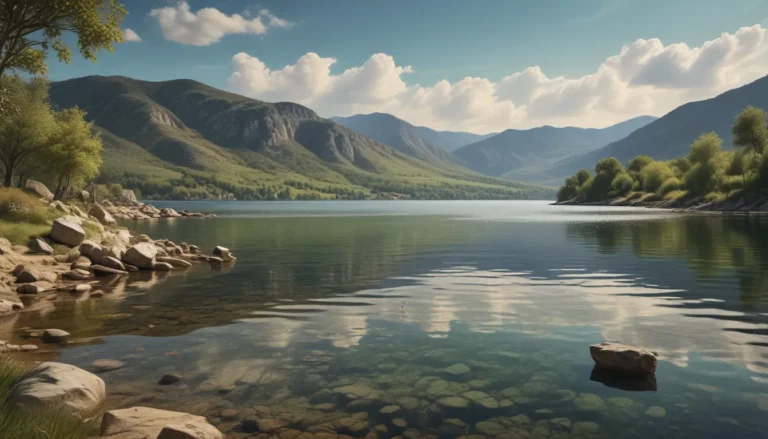The pictures we use in our articles might not show exactly what the words say. We choose these pictures to make you interested in reading more. The pictures work together with the words but don’t take their place. The words still tell you the important facts.
Canadian wildfires are a natural phenomenon that has shaped the country's landscapes for centuries. While they play a crucial role in maintaining ecosystems, they also pose significant threats to human life and property. In this article, we will explore 20 fascinating facts about Canadian wildfires, shedding light on their impact, causes, and future implications.
Canada’s Breathtaking Forests
Canada boasts nearly 10% of the world's forests, making it a haven for diverse flora and fauna. The vast forest cover in the country makes wildfires a common occurrence, shaping the natural environment in profound ways.
The Impact of Frequency
Annually, Canada witnesses approximately 8,000 wildfires, scorching an area of about 2.5 million hectares. To put this into perspective, this burned area is nearly half the size of Nova Scotia, emphasizing the scale of the destruction wildfires can cause.
Understanding the Role of Lightning
Lightning strikes account for roughly 35% of all wildfires in Canada. These fires are often more severe as they occur in remote areas, making detection and containment challenging. They can burn uncontrollably for days, wreaking havoc on the surrounding environment.
Human Activities and their Consequences
Despite lightning being a significant cause of wildfires, human activities contribute to nearly 55% of all incidents. From unattended campfires to discarded cigarettes and arson, these actions have far-reaching consequences on the country's landscape and wildlife.
The Fire Season Timeline
In Canada, the wildfire season typically spans from April to October, peaking in July and August. However, the impact of climate change is leading to longer fire seasons, intensifying the challenges faced by firefighting efforts.
Reflecting on the Fort McMurray Wildfire
The Fort McMurray wildfire in 2016 stands out as one of the most devastating in Canadian history. This catastrophic event led to the evacuation of 88,000 individuals and the destruction of approximately 2,400 homes and buildings, emphasizing the destructive power of wildfires.
Climate Change: A Catalyst for Wildfires
The effects of climate change are exacerbating the frequency and intensity of wildfires in Canada. Rising temperatures and altered precipitation patterns create ideal conditions for fires to spark and spread, posing a significant threat to the country's ecosystems and communities.
Exploring the Economic Ramifications
The economic impact of wildfires is substantial, with the Fort McMurray fire alone resulting in an estimated $9.9 billion in damages. This event stands as the costliest disaster in Canadian history, highlighting the financial toll wildfires can take on the country.
The Valor of Firefighting Efforts
Canada maintains a robust firefighting system, leveraging ground crews, air tankers, and helicopters to combat wildfires effectively. Additionally, international collaborations allow the country to share resources and expertise, bolstering its firefighting capabilities.
Embracing the FireSmart Program
The FireSmart program is a national initiative aimed at helping communities and individuals reduce wildfire risks around their homes and properties. By promoting practices such as clearing vegetation and using fire-resistant materials, the program enhances safety and resilience in wildfire-prone areas.
Wildfires: Impacts on Wildlife
Wildfires have both positive and negative effects on wildlife. While they can lead to habitat destruction, they also create new habitats and foster biodiversity, showcasing the complex interplay between wildfires and the natural world.
Navigating Smoke and Air Quality Concerns
Smoke from wildfires can travel vast distances, impacting air quality across the country and even reaching other parts of the world. This underscores the far-reaching consequences of wildfires on human health and the environment.
The Resilience of Regeneration
Following a wildfire, forests demonstrate a remarkable ability to regenerate. The fire clears away deadwood, releasing nutrients back into the soil and facilitating the growth of new plants, showcasing the natural cycle of renewal after destruction.
Honoring Indigenous Knowledge
Indigenous communities have long utilized controlled burns as a land management tool, showcasing their deep understanding of the natural environment. This traditional knowledge is increasingly valued for its role in preventing catastrophic wildfires and promoting ecosystem health.
Reflecting on the Largest Fire in History
The largest wildfire in Canadian history occurred in 2014 in the Northwest Territories, engulfing an area of over 3.4 million hectares. This event serves as a stark reminder of the immense scale and impact of wildfires on the country's landscapes.
Unveiling the Fire Weather Index
The Fire Weather Index (FWI) is a critical tool used in Canada to assess the risk of wildfires. By considering factors such as temperature, humidity, wind speed, and rainfall, this system aids in predicting and managing wildfire outbreaks effectively.
Championing Wildfire Research
Canada excels in wildfire research, with scientists delving into various aspects such as fire behavior, climate change impacts, mitigation strategies, and the effects of smoke on health. This ongoing research fuels innovation and enhances the country's preparedness in combating wildfires.
Leveraging Remote Sensing Technology
Remote sensing technology, encompassing satellites and drones, plays a pivotal role in detecting and monitoring wildfires across Canada's vast and remote wilderness areas. These advanced technologies enable rapid response and effective management of wildfire incidents.
Educating the Public
Public education is a cornerstone of wildfire prevention efforts. Authorities work tirelessly to raise awareness about safe practices and the importance of reporting wildfires promptly, empowering communities to take proactive steps in wildfire prevention and mitigation.
Navigating the Future of Wildfires
With the specter of climate change looming, the future of wildfires in Canada remains uncertain. However, through ongoing research and proactive measures, the country is better equipped to tackle and minimize the impacts of these natural disasters, paving the way for a more resilient future.
Embracing Canadian Wildfires
Canadian wildfires embody a complex interplay of natural and human-induced factors, shaping the country's landscapes and ecosystems. As we navigate the challenges posed by these phenomena, it is essential to foster understanding, collaboration, and proactive measures to mitigate their impact on communities and the environment.
Frequently Asked Questions (FAQs)
What is the most common cause of wildfires in Canada?
Human activities are the primary cause of wildfires in Canada, accounting for nearly 55% of all incidents.
How does climate change influence wildfires?
Climate change contributes to higher temperatures and altered precipitation patterns, creating conducive conditions for wildfires to ignite and spread. It also leads to extended fire seasons, intensifying the wildfire threat.
What was the largest wildfire in Canadian history?
The largest wildfire in Canadian history occurred in 2014 in the Northwest Territories, covering an area of over 3.4 million hectares.
How does Canada combat wildfires?
Canada employs a multi-faceted approach to firefighting, utilizing ground crews, air tankers, and helicopters. The country also engages in international partnerships to bolster its firefighting capabilities.
What is the economic toll of wildfires in Canada?
Wildfires have a significant economic impact in Canada, with events like the Fort McMurray fire in 2016 resulting in an estimated $9.9 billion in damages, marking it as the costliest disaster in Canadian history.
Conclusion
Canadian wildfires stand as a testament to the intricate relationship between nature, humanity, and the environment. As we confront the challenges posed by wildfires, it is crucial to approach them with a sense of understanding, resilience, and preparedness. By fostering collaboration, embracing innovation, and championing sustainable practices, we can navigate the complexities of wildfires and work towards a future where communities and ecosystems thrive in harmony.
In exploring the diverse facets of Canadian wildfires, we unveil a tapestry of resilience, adaptation, and coexistence amidst the fiery landscapes that shape the Canadian wilderness. Let us embark on this journey with a shared commitment to knowledge, stewardship, and respect for the forces of nature that define our world.






